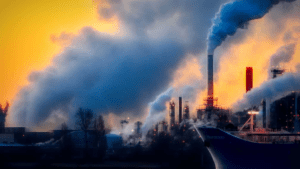When talking about cities and urban areas, it’s commonly normal to think about skyscrapers, houses, concrete and pollution, but what about if the city mixes with natural elements?
This is the goal of the so-called Urban forestation, which aims to redefine the concept of urban areas, as it’s defined as the cultivation and management of trees in relation to their actual and potential contribution to the physiological, sociological and economic well-being of urban society.
Including and replacing artificial elements with natural ones throughout cities brings different advantages, thanks to their natural activity, plants, in general, can absorb carbon dioxide through Chlorophyll photosynthesis, therefore improving the quality of life both in small and bigger cities. Green is also a natural barrier to noise and guarantees a correct outflow of rainwater onto the ground, it also helps in the climatic regulation of buildings, reducing the surrounding temperature during summer months, and protecting them from cold winds during winter. Last, but certainly not least, all the perceivable benefits in terms of people’s quality of life, with the creation of spaces for socializing, leisure, physical activity and relaxation.
Vertical Forest
A clear and particular example of urban forestation is represented by Vertical Forests, an innovative forestation system in urban areas, this project has been created for the first time in Milan by the architect Stefano Boeri who developed the construction of two buildings 80 and 112 m high, which house the complex of 800 trees, 15.000 perennials and 5.000 shrubs.
The same architect is carrying out another project which is expected to end this year (2020) in Liuzhou, China. This city will be the first in the world to become a forest city, capable of absorbing around 10,000 tons of CO2 and 57 tons of fine particles every year and producing around 900 tons of oxygen, capable of hosting up to 30,000 inhabitants. Liuzhou Forest City (the future name of the city) will have all the characteristics of a fully self-sufficient urban settlement from the energy point of view, starting from geothermal energy for indoor conditioning and the widespread use of solar panels on the roofs for the collection of renewable energies.
Vertical Farming
Vertical Farming has brought a new agriculture system to cultivate plantations indoors, this is a new technology which came out due to the food’s water footprint, which indicates the amount of water needed to produce it: consumers have no idea that agriculture is responsible for 65% of water consumption. Furthermore, in 2050, according to FAO (the Food and Agriculture Organization of the United Nations), the world population will exceed 10 billion: the resources of two planets would thus be needed to meet the needs of so many people.
The “Future Farming” research has taken into account new technologies applied to agriculture to analyze their advantages in terms of safety, quantity and quality of production. These systems are 75% more productive than traditional agriculture in the field and consume very little water, about 95% less. Furthermore, vertical farms have no geographical constraints, since they can also find a place in urban areas and offer fresh and zero-kilometre products.





